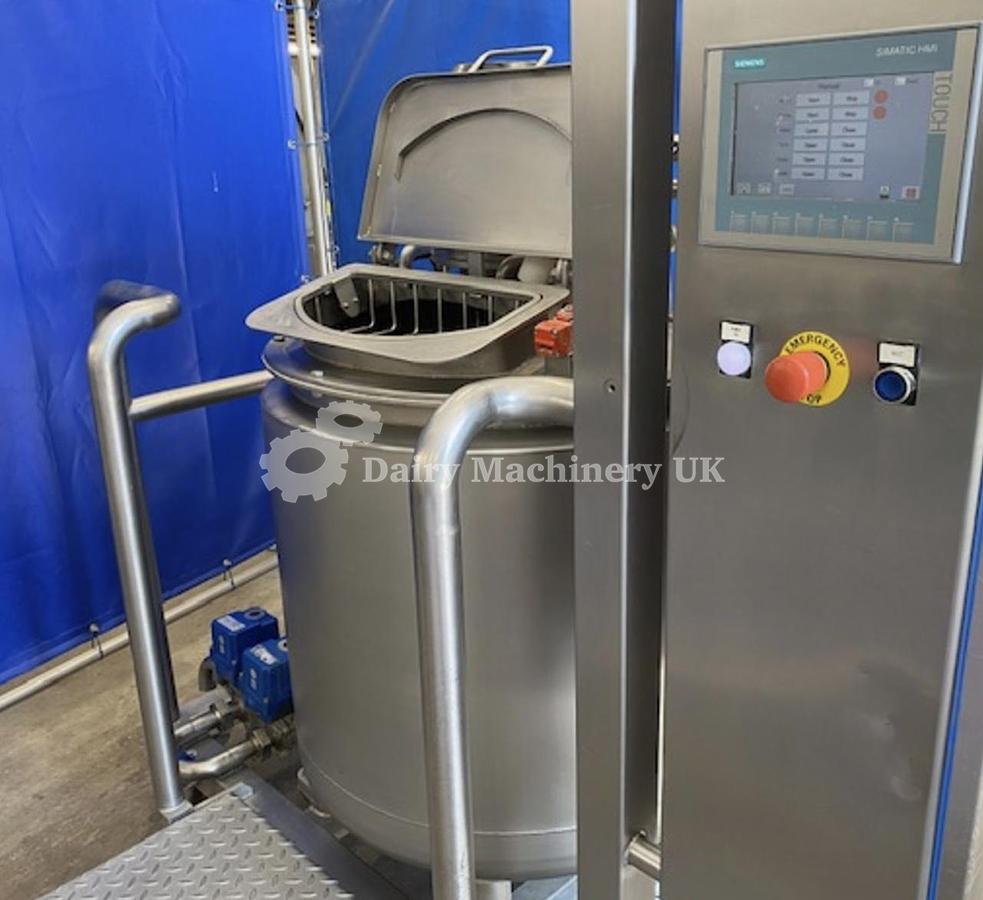Processing Tank With High Shear Mixer 500 Litres

Processing Tank With High Shear Mixer 500 Litres
Description
Temperature-controlled processing tanks are vital in various industries, including food, pharmaceuticals, and chemical manufacturing, where precise temperature management is essential for product quality and safety. Here’s a detailed overview of temperature-controlled processing tanks:
What is a Temperature-Controlled Processing Tank?
A temperature-controlled processing tank is a vessel designed to maintain a specific temperature range during the processing of materials. These tanks are equipped with heat exchange systems, temperature sensors, and control mechanisms that ensure the contents remain at the desired temperature throughout the processing cycle.
Key Features
- Heating and Cooling Systems:
- Heaters: Can be electric or steam-based to raise the temperature of the contents.
- Chillers: Usually water or glycol-based cooling systems to lower the temperature.
- Insulation: Tanks often come with insulation to minimize heat loss or gain from external environments, maintaining stable internal conditions.
- Temperature Control Systems: Sophisticated controllers and sensors (like thermocouples) monitor and adjust the temperature in real-time, providing precise control over the processing environment.
- Mixing Mechanisms: Many temperature-controlled tanks have integrated mixers or agitators to ensure uniform temperature distribution throughout the contents.
- Material Construction: Typically made from stainless steel or other materials that are resistant to corrosion and can withstand high temperatures.
Applications in the Food Industry
- Pasteurization: Heating milk and other liquids to kill bacteria while maintaining product quality.
- Cooking: Precise temperature control during cooking processes (e.g., making sauces, soups, or jams) to ensure proper texture and flavor.
- Fermentation: Regulating temperatures during fermentation processes (e.g., beer, yogurt) to ensure the right conditions for microbial activity.
- Storage: Maintaining the quality of sensitive ingredients (like chocolate or dairy) by controlling temperatures to prevent spoilage.
Advantages of Temperature-Controlled Processing Tanks
- Quality Assurance: Consistent temperatures lead to uniform product quality, flavor, and texture.
- Safety: Helps in maintaining food safety standards by ensuring thorough cooking or pasteurization processes.
- Energy Efficiency: Advanced control systems can optimize energy use, reducing operating costs.
- Versatility: Suitable for various processes including heating, cooling, and maintaining temperatures for different food products.
Considerations
- Control Precision: The accuracy of temperature control systems is crucial; look for tanks with advanced control features for better reliability.
- Cleaning: Ensure that the tank design allows for easy cleaning to comply with sanitation standards, especially in the food industry.
- Integration: Consider how easily the tank can be integrated into existing processing lines and systems.
High shear mixers are essential equipment in the food processing industry, particularly for emulsifying, blending, and homogeneously mixing ingredients with varying viscosity levels. Here’s an overview of how they work and their applications:
What is a High Shear Mixer?
A high shear mixer is designed to create high shear forces that thoroughly mix ingredients together. It typically consists of a rotor-stator assembly where the rotor rapidly spins, creating a vacuum that draws ingredients into the mixing zone. The intense shear forces break down particle sizes and disperse them uniformly.
Key Features
- High Speed: The rotor can spin at high speeds, generating powerful shear forces.
- Versatility: Suitable for liquids, pastes, and also for suspensions with solid particles.
- Homogenization: Produces a uniform mixture with a consistent texture and quality.
- Temperature Control: Some models have provisions for heating or cooling, which can help in processing sensitive ingredients.
Applications in Food Processing
- Emulsification: Creating stable emulsions for sauces, dressings, and spreads by mixing oil and water-based ingredients.
- Homogenization: Used in dairy products (like milk and cream) to ensure a consistent texture and flavor.
- Mixing Powders: Blending powdered ingredients like spices, flour, or protein powders into liquids.
- Puréeing: Making smooth purées from fruits, vegetables, or cooked foods for soups and sauces.
- Aeration: Incorporating air into mixtures to create foams and mousses, enhancing texture and mouthfeel.
Advantages of High Shear Mixers
- Efficiency: Reduces processing times while improving mixing quality.
- Improved Product Quality: Produces finer particle sizes and better texture.
- Scalability: Available in various sizes, making it easy to scale up from laboratory to production scale.
- Reduced Batch Times: Better mixing efficiency often leads to shorter batch processing times.
Considerations
- Cleaning and Maintenance: Regular cleaning is essential to prevent contamination, especially in food applications. Many high shear mixers are designed to be easily disassembled for cleaning.
- Material Compatibility: Ensure that the mixer materials are suitable for food applications (e.g., stainless steel) to comply with safety standards.
Specifications
| Manufacturer | Dairy Machinery UK |
| Model | 500 |
| Year | 2020 |
| Condition | Used |
| Serial Number | 0/1938 |
| Stock Number | 828 |
| Capacity | 500 Litres |
| Mixer | High Shear Mixer for powders |
| Heated | Heated tank regulated via the HMI |
| Controls | PLC , SIEMENS HMI |
| Product in-let Pump | Included |
| Product outlet Pump | Included |
| Construction | Fully stainless steel and frame |
| Openings | Opening on top with rails for adding powders |
| Available | Immediately |
| Finance Available | Contact us for a quote |










